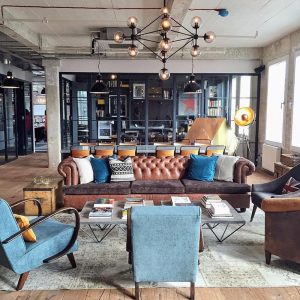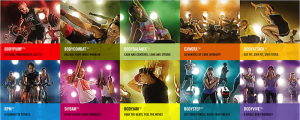Using a ‘brand peer group’ for inspiration
Whilst it’s of course important to keep an eye on your direct competition, we find that looking further afield can be a richer source of ‘fuel’ for idea creation. We encourage teams to look at inspiring companies in adjacent or even distant categories that are related to their brand and/or target consumer; we call this a ‘brand peer group’.
Below we walk through how to use this approach on your own brand.
Step 1: Pick your peer group
The first step is to carefully pick your peer group, based on the positioning task you are facing. This avoids the trap of just looking at ‘cool brands’ without knowing what you are looking for.
For example, Axe used Nike and Red Bull for inspiration when developing communication that connects with young men. This helps Axe is compete for ‘share of culture’ with aspirational brands used by their target consumer. On Napolact, a Romanian dairy brand, we looked at examples of different brands that had effectively communicated the concept of ‘home’. And on Ryvita, a brand of crisp bread, we looked for examples of ‘shape management’ brands with distinctive personalities, such as Diet Coke. This led to a refreshed personality based on the idea ‘Ryvita is one of the girls’.

Step 2: Create idea fuel
The next step is to use the brand peer group to create ‘idea fuel’. Thanks to Google and YouTube, getting examples of communication is of course much easier to do than it used to be only a few years ago. Beyond communication, we sometimes do ‘treasure hunts’ to seek out interesting products from other markets. Another great source of inspiration is talking to people who actually work for companies in your brand peer group. For example, we were able to talk to the brand director of budget boutique hotel the Hoxton to get inspiration on customer experience for a retail client, as we posted on here.

Step 3: Make the leap
The final and most important step is to use your idea fuel to make a creative leap and come up with practical ideas for your own brand. As part of the work we did rebooting our own brand for a digital age, we picked a peer group related to our brand name: the world of gyms and workouts. This led to a series of interesting ideas, including the following:
– Vary the workouts: gyms are demonstrating better long-term fitness gains by tapping into different types of strength. Weekly gym schedules now include wildly diverse programs such as Zumba, kickboxing & group cycling, each calculated to build different fitness in a different way.
=> this reinforced the need to inject ‘systematic variety’ into our projects, by using different techniques such as consumer-safaris, live visualization, storytelling and archetypes
– Real-time tech: technology is revolutionizing the world of gyms and workouts. Apps allow us to engage with our fitness goals and monitor activity levels in real time, in addition to providing inspiration and encouragement.
=> we’ve looked at multiple ways to harness digital technology, including social listening, instant mobile surveys and online qualitative groups that can be viewed from anywhere in the world
– Segmented offerings: the success of women-only gyms started in the US with Curves, and the concept has spread across countries. Several segmented gym offerings are mushrooming, inspired by disciplines as diverse as boxing & dance.
=> we’ve created new offerings to meet different needs, including Personal Brand Coaching when people want intensive, one-on-one workouts rather than a team-based project.

In conclusion, look beyond the ‘usual suspects’ of your direct competitors by carefully selecting a brand peer group to provide fresh insight fuel. It may inspire you to come up with new ideas for positioning and marketing.


